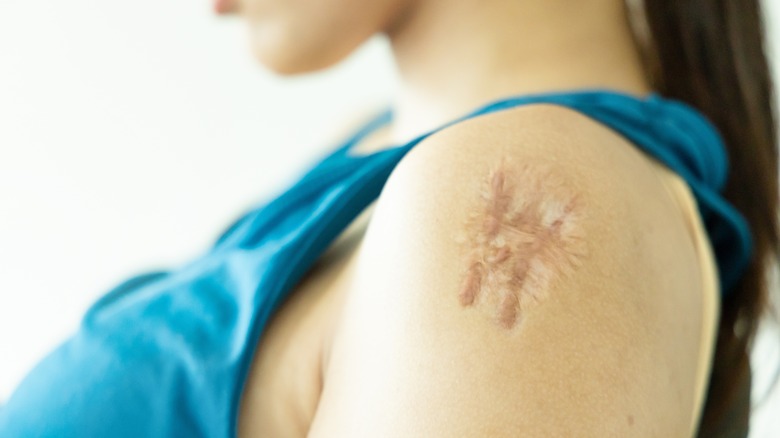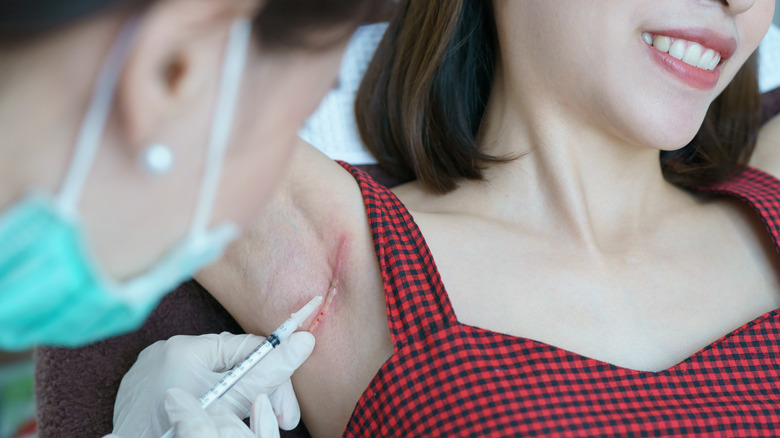How To Best Get Rid Of Keloid Scars
Scars can either serve as a physical reminder that you have a story to tell, or they are the insult added to a very literal injury. And, like both stories and insults, some are bigger than others. The United Kingdom's National Health Service (NHS) states that fine-line scars are common after things like surgery or a wound. These scars usually fade and flatten within two years.
But they are far from the only kind of scar. And as people prone to keloid scars know, fading and flattening is not always on the agenda. This is because, as the Mayo Clinic explains, keloid scars can be caused by a buildup of collagen under the skin. Collagen is a necessary component during the healing process. But people prone to keloids may develop too much at the wound site, leading to rounded scars that are often much larger than the original injury.
And injuries aren't the only time someone may develop a keloid. Tattoos and even piercings can also lead to a collagen buildup, as can surgery and burns (via the American Academy of Dermatology). That might leave those with a keloid scar wondering what options exist for removing them.
Treatment depends on timing
The NHS puts it best when they state that, while there are keloid removal options, they may not be successful. One option, surgery, may even lead to larger scars in the long run as the area of the removed scar may lead to another keloid.
Thankfully they do not have this warning about other treatment options, though many have caveats of their own. The NHS goes on to say that laser surgery is another treatment option, but it will only reduce a keloid's redness or discoloration. It is not an option meant to reduce the scar's size. On the other hand, liquid nitrogen can be used to prevent their growth.
Another treatment suggestion comes from the Mayo Clinic. They suggest using a compression dressing for 12 to 24 hours a day while the primary wound heals. The dressing must be worn for four to six months to aid in keloid prevention and may be uncomfortable, but it is an option for people looking to curb keloid development early. Small keloids may also be treated with steroid injections to reduce the overall amount of scar tissue.
There is no easy answer to keloid treatment, but as you can see, there are options available. Many treatments may have better results when done earlier, but your doctor can help you choose the best one for you.


